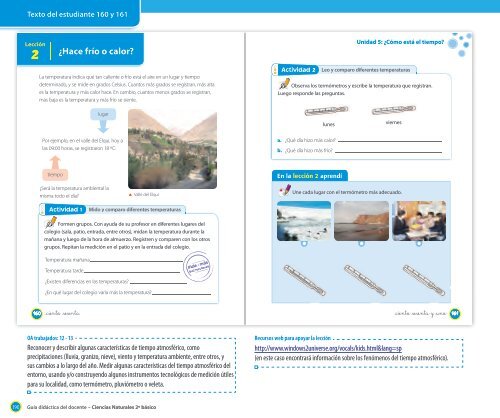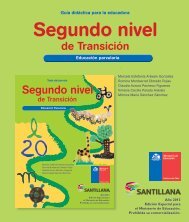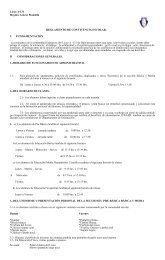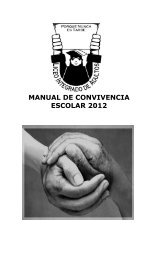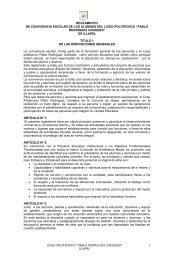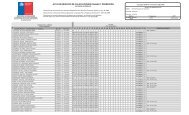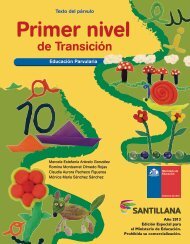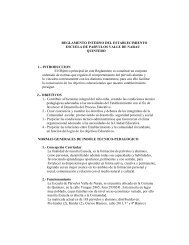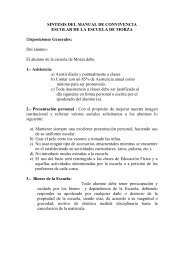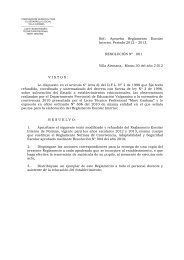Ciencias Naturales - Ministerio de Educación
Ciencias Naturales - Ministerio de Educación
Ciencias Naturales - Ministerio de Educación
You also want an ePaper? Increase the reach of your titles
YUMPU automatically turns print PDFs into web optimized ePapers that Google loves.
Texto <strong>de</strong>l estudiante 160 y 161<br />
Lección<br />
2 ¿Hace frío o calor?<br />
La temperatura indica qué tan caliente o frío está el aire en un lugar y tiempo<br />
<strong>de</strong>terminado, y se mi<strong>de</strong> en grados Celsius. Cuantos más grados se registran, más alta<br />
es la temperatura y más calor hace. En cambio, cuantos menos grados se registran,<br />
más baja es la temperatura y más frío se siente.<br />
Por ejemplo, en el valle <strong>de</strong>l Elqui, hoy a<br />
las 09:00 horas, se registraron 18 ºC.<br />
tiempo<br />
lugar<br />
¿Será la temperatura ambiental la<br />
misma todo el día?<br />
Actividad 21<br />
Valle <strong>de</strong>l Elqui<br />
Mido y comparo diferentes temperaturas<br />
Formen grupos. Con ayuda <strong>de</strong> su profesor en diferentes lugares <strong>de</strong>l<br />
colegio (sala, patio, entrada, entre otros), midan la temperatura durante la<br />
mañana y luego <strong>de</strong> la hora <strong>de</strong> almuerzo. Registren y comparen con los otros<br />
grupos. Repitan la medición en el patio y en la entrada <strong>de</strong>l colegio.<br />
Temperatura mañana<br />
Temperatura tar<strong>de</strong><br />
¿Existen diferencias en las temperaturas?<br />
¿En qué lugar <strong>de</strong>l colegio varía más la temperatura?<br />
160 _ciento _sesenta<br />
OA trabajados: 12 - 13<br />
Reconocer y <strong>de</strong>scribir algunas características <strong>de</strong> tiempo atmosférico, como<br />
precipitaciones (lluvia, granizo, nieve), viento y temperatura ambiente, entre otros, y<br />
sus cambios a lo largo <strong>de</strong>l año. Medir algunas características <strong>de</strong>l tiempo atmosférico <strong>de</strong>l<br />
entorno, usando y/o construyendo algunos instrumentos tecnológicos <strong>de</strong> medición útiles<br />
para su localidad, como termómetro, pluviómetro o veleta.<br />
190 Guía didáctica <strong>de</strong>l docente – <strong>Ciencias</strong> <strong>Naturales</strong> 2º básico<br />
Actividad 2<br />
En la lección 2 aprendí<br />
Unidad 5: ¿Cómo está el tiempo?<br />
Leo y comparo diferentes temperaturas<br />
Observa los termómetros y escribe la temperatura que registran.<br />
Luego respon<strong>de</strong> las preguntas.<br />
lunes<br />
a. ¿Qué día hizo más calor?<br />
b. ¿Qué día hizo más frío?<br />
viernes<br />
Une cada lugar con el termómetro más a<strong>de</strong>cuado.<br />
_ciento _sesenta y _uno<br />
Recursos web para apoyar la lección<br />
http://www.windows2universe.org/vocals/kids.html&lang=sp<br />
(en este caso encontrará información sobre los fenómenos <strong>de</strong>l tiempo atmosférico).<br />
161


